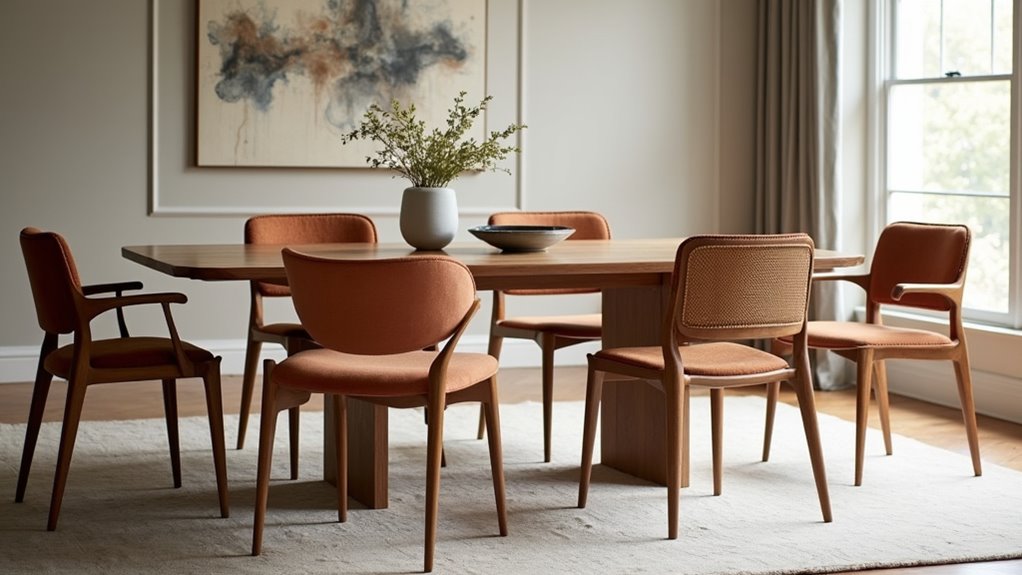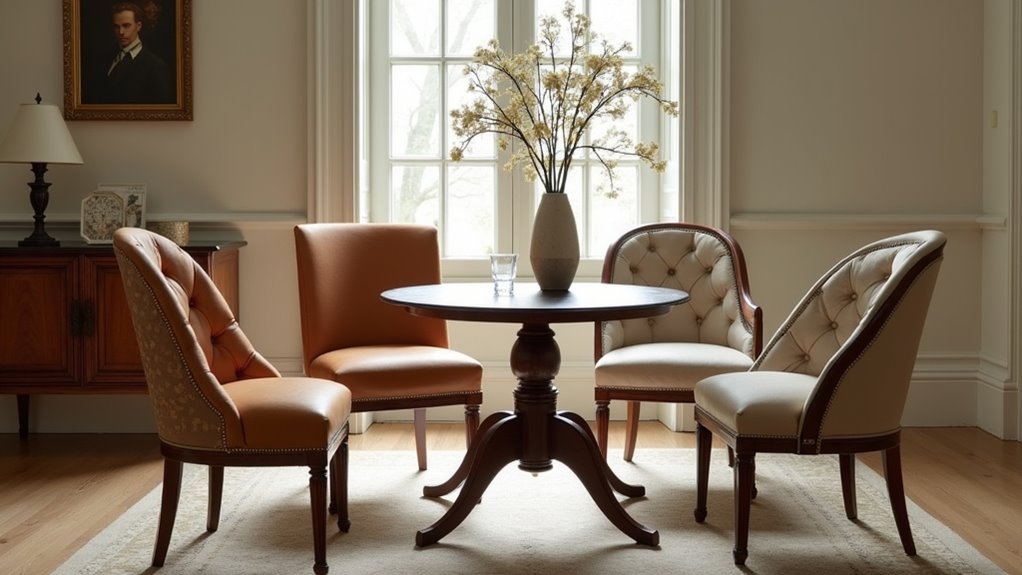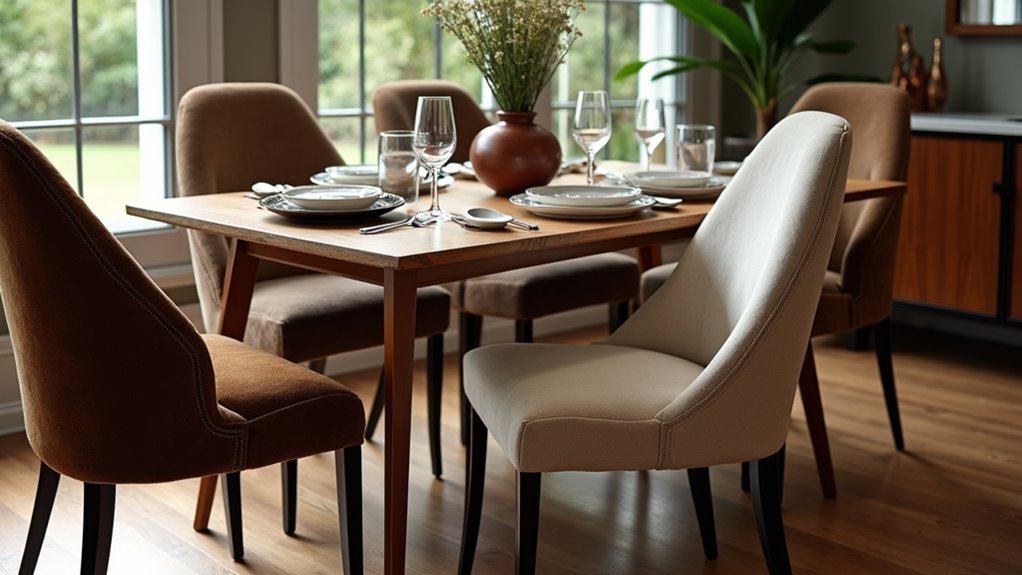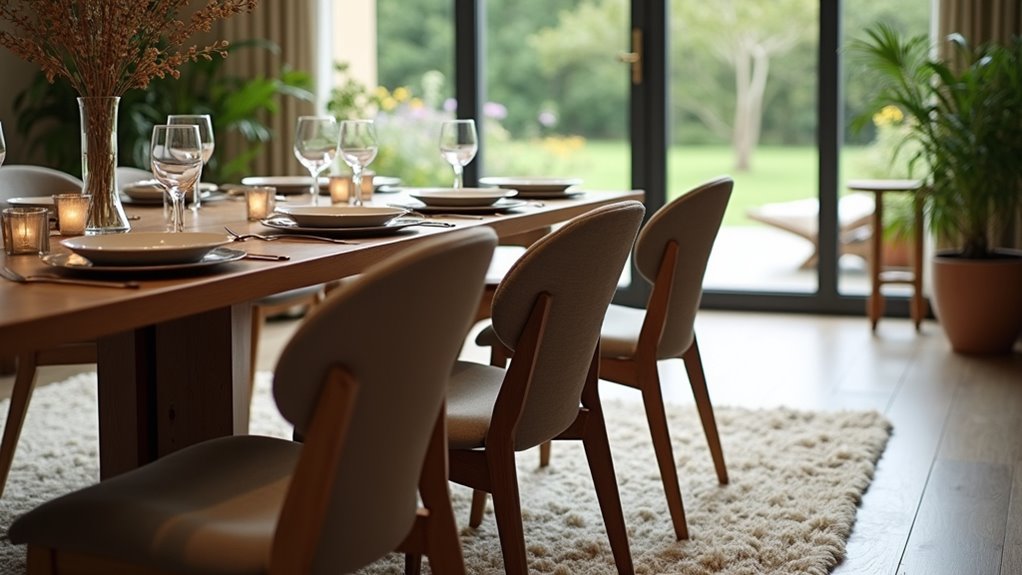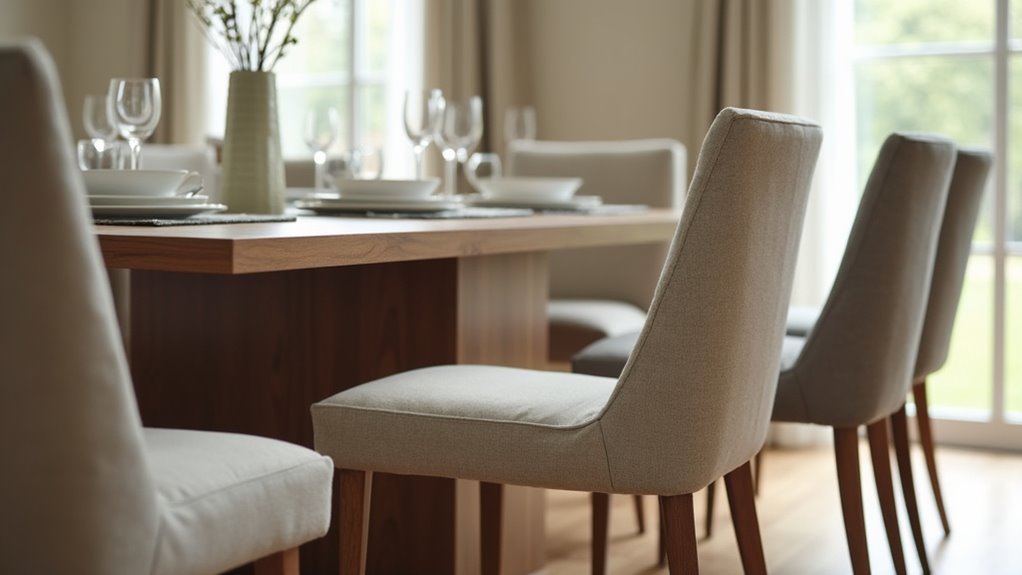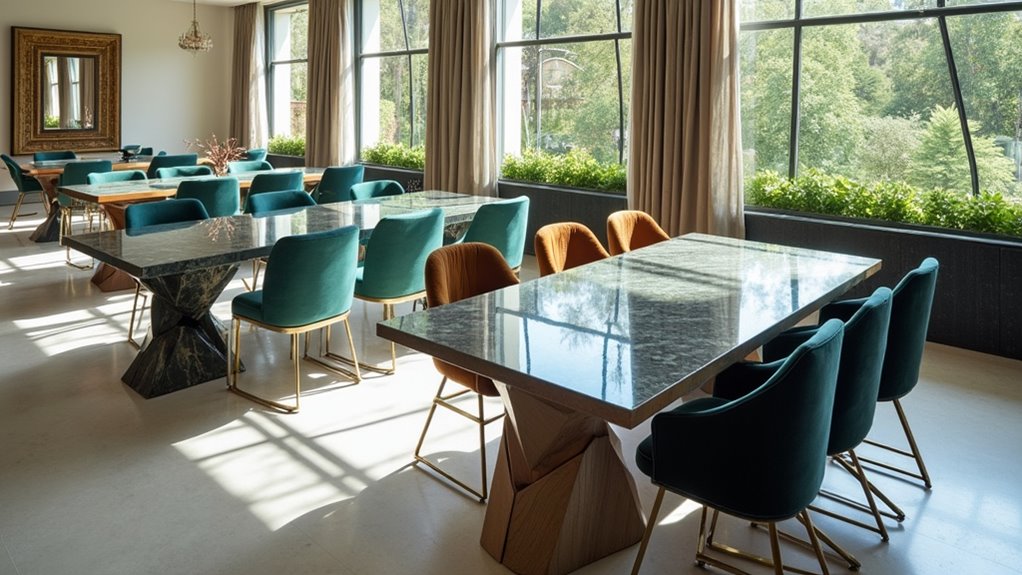The Le Corbusier dining chair is a design icon due to its innovative integration of aesthetic elegance and ergonomic functionality. Crafted from lightweight tubular steel and high-density foam, it showcases modern manufacturing techniques that enhance both strength and style. The chair embodies a collaborative spirit among Le Corbusier, Jeanneret, and Perriand, reflecting a significant evolution in furniture design from the late 1920s to late 1930s. This legacy continues to influence modern aesthetics and functionality. Further exploration reveals even more about its impact.
Key Takeaways
- The Le Corbusier Dining Chair combines aesthetics and functionality, representing a key evolution in 20th-century furniture design with its innovative materials and construction.
- Collaboratively designed by visionaries Le Corbusier, Pierre Jeanneret, and Charlotte Perriand, it showcases a unique synthesis of radical ideas and technical expertise.
- Its ergonomic barrel design and swivel functionality prioritize comfort and usability, catering to diverse body shapes while maintaining minimalist elegance.
- The chair’s structure reveals a playful contrast between the exposed steel frame and plush cushions, offering both visual intrigue and tactile pleasure.
- As a reflection of modernism, the chair continues to influence contemporary furniture design, symbolizing the enduring power of collaborative innovation.
Collaborative Genius and Philosophical Roots
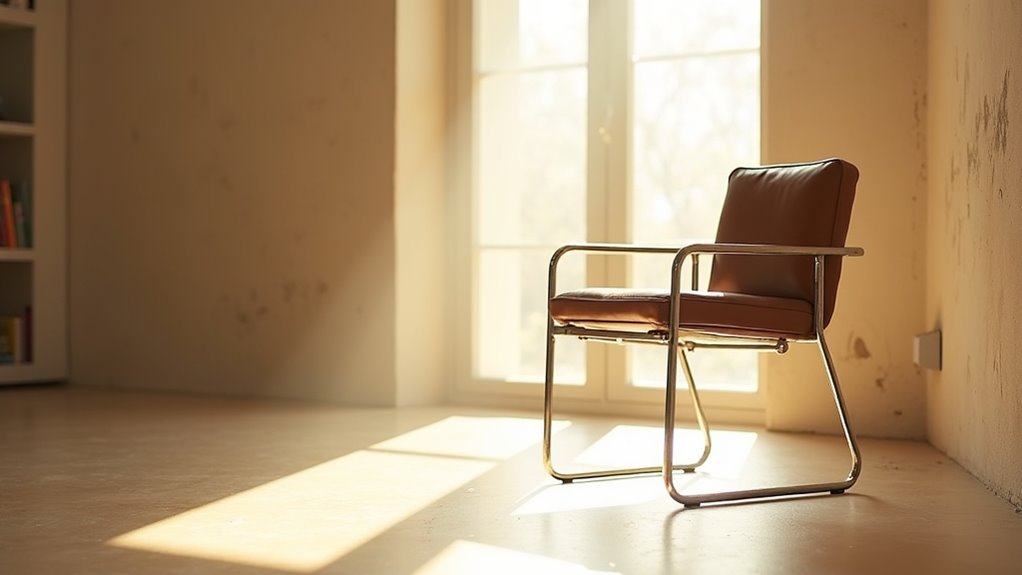
The collaborative genius behind the Le Corbusier dining chair emerged from an innovative partnership characterized by the combined talents of Le Corbusier, Pierre Jeanneret, and Charlotte Perriand.
Their creative process, likened to a “three fingers on one hand,” exemplified a unique collaborative synergy that harnessed their distinct skills: visionary concepts from Le Corbusier, technical grounding from Jeanneret, and aesthetic focus from Perriand. This dynamic integration formed the philosophical foundations of their design ethos, emphasizing function as paramount. Rejecting ornamental excess, their furniture represented a human-centric approach, viewed as equipment essential for living. Notably, Le Corbusier’s architectural philosophy also influenced furniture design, reflecting the principles he outlined in his seminal book, “Towards a New Architecture”. Furthermore, their commitment to industrial materials resulted in a transformative impact on how furniture was perceived in modern living spaces.
Presenting their work at the Salon d’Automne in 1929, they showcased a revolutionary perspective on interior spaces that would markedly influence 20th-century design.
Innovative Materiality and Construction
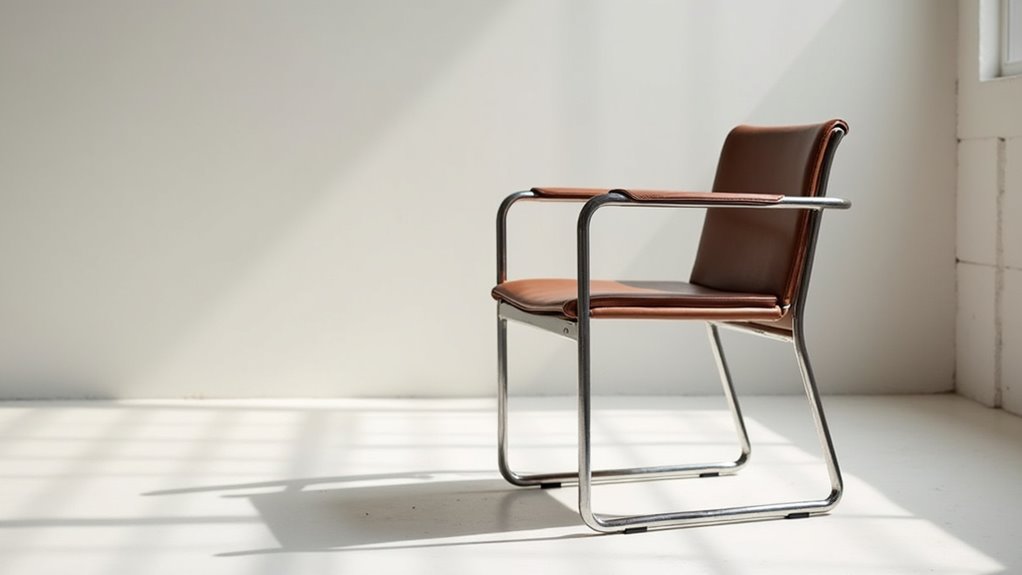
Innovative materiality and construction techniques define the Le Corbusier dining chair, reflecting a radical departure from conventional furniture design. This chair leverages tubular innovation, employing lightweight, durable steel to create an external frame that openly displays its machine aesthetic. The exposed frame differentiates itself from traditional furniture, showcasing industrial precision. Through innovative use of tubular steel, the chair provides a lightweight yet structurally supportive function. The chrome-plated finish harmonizes with a sleek, modern aesthetic, often demonstrating a minimalist approach. With exposed structural elements, it emphasizes a fusion of form with functionality. Advanced manufacturing techniques such as fusion welding ensure both strength and style. Modular design elements allow flexibility and adaptability for varied modern living spaces. Incorporating design elements from modern farmhouse appeal, the chair evokes a cozy, yet sophisticated dining experience, balancing rustic charm with contemporary elegance.
Rational Design and Ergonomics
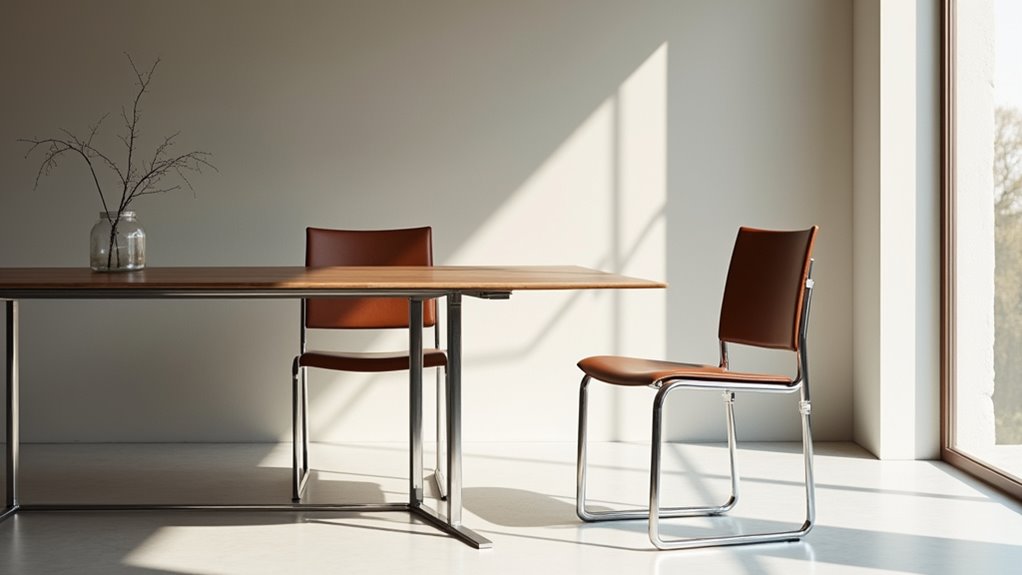
The ergonomic barrel design of Le Corbusier’s dining chair exemplifies a commitment to human-centered form, facilitating natural seated posture while accommodating various body shapes. Additionally, the incorporation of swivel functionality enhances user comfort by allowing effortless movement and interaction within a dining space. This integration of rational design principles ensures both aesthetic appeal and practical usability, aligning with Le Corbusier’s vision of furniture as essential equipment for living. High-density foam cushions, commonly used in dining chairs, maximize comfort during extended dining experiences, a principle evident in Le Corbusier’s design.
Ergonomic Barrel Design
While many modern designs prioritize aesthetics, the ergonomic barrel design of the Le Corbusier dining chair integrates comfort and functionality with a thoughtful approach to human anatomy.
The chair features a curved, barrel-shaped backrest that serves as both a backrest and armrests, meticulously crafted to align with the body’s natural contours. This ergonomic design enhances the seating experience by offering support without compromising on compactness.
The generous padding of the polyurethane foam not only contributes to comfort but also exemplifies a commitment to rational design principles.
Swivel Functionality Benefits
Elevating the design principles of the Le Corbusier dining chair, the swivel functionality enhances both rationality and ergonomics. The chair exemplifies the innovative swivel dynamics, allowing for seamless adaptability in various settings.
Its 360-degree rotational convenience fosters a social environment while reducing the physical strain on users. This design not only aligns with modernist ideals but also serves practical needs in compact urban spaces.
- Effortless interaction at the dining table
- Enhanced mobility within furniture layouts
- Reduced discomfort during extended use
- Versatile applications in diverse spaces
- A harmonious blend of form and function
In this way, the LC7 embodies the concept of furniture as functional equipment, bridging elegant design with everyday living.
The “Cushion Basket” Concept
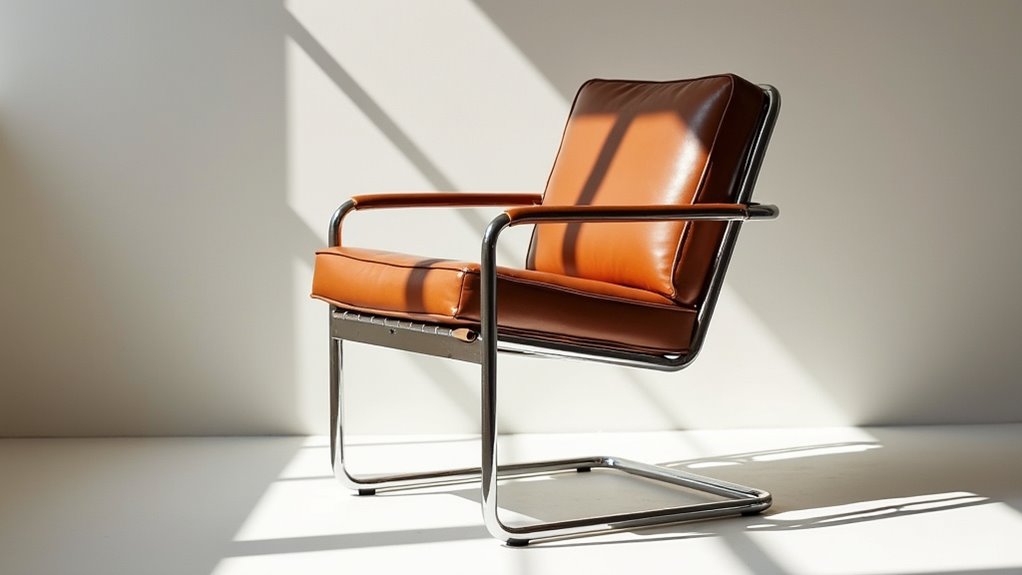
The “Cushion Basket” concept represents a significant redefinition of the modern club chair, emphasizing the structural visibility of its framework.
This design creates a striking contrast between the rigid external frame and the soft, individual cushions, enhancing both aesthetic appeal and functional comfort.
Modern Club Chair Redefined
How does the “Cushion Basket” concept transform the traditional notion of a club chair? This innovative design by Le Corbusier and his collaborators reimagines traditional aesthetics through a modern reinterpretation that emphasizes functionality and comfort.
The externalized steel frame, termed a “basket,” contains plush cushions, creating a striking contrast between structure and softness.
- Evokes a sense of timeless elegance
- Redefines comfort through human-centered design
- Breaks conventional expectations and norms
- Celebrates minimalist beauty in everyday life
- Defies the passage of time, remaining relevant
The “Cushion Basket” concept encapsulates a transformative approach, making a bold statement that enhances the lounge experience while anchoring itself firmly in the history of modern design.
Rigid vs. Soft Contrast
While traditional club chairs often conceal their structural elements beneath layers of upholstery, the “Cushion Basket” concept distinctly alters this expectation by emphasizing an interplay between rigidity and softness.
The LC2 and LC3 chairs feature a visible frame, crafted from high-gauge tubular steel, providing a stark rigid contrast to the oversized, plush cushions that seem to overflow from within. This intentional juxtaposition creates a dynamic tension, merging soft aesthetics with industrial strength.
By exposing its exoskeleton, the design not only highlights structural integrity but also aligns with modernist principles that prioritize functionality.
The grid-like form of the frame complements the comfort provided by the sumptuous cushioning, establishing a visual harmony that contributes to the chairs’ iconic status.
Enduring Influence and Timeless Appeal
Le Corbusier’s dining chair exemplifies a confluence of minimalist elegance and innovative design principles, establishing its status as a timeless icon within the realm of modernist furniture.
This piece not only showcases a commitment to timeless innovation but also embodies a design legacy that continues to influence contemporary aesthetics. Its simplicity allows for versatile integration into various settings, while the revolutionary use of materials conveys a forward-thinking approach.
A new sentence with innovative materials and the rest of the sentence.
- The allure of minimalism creates emotional resonance.
- Unmatched versatility enhances spatial harmony.
- Innovative materials provide tactile pleasure.
- Human-centered design prioritizes comfort and function.
- An enduring symbol of modernism captivates collectors.
The chair’s impact persists, affirming its place in design history and contemporary relevance.
A Collaborative and Evolving Legacy
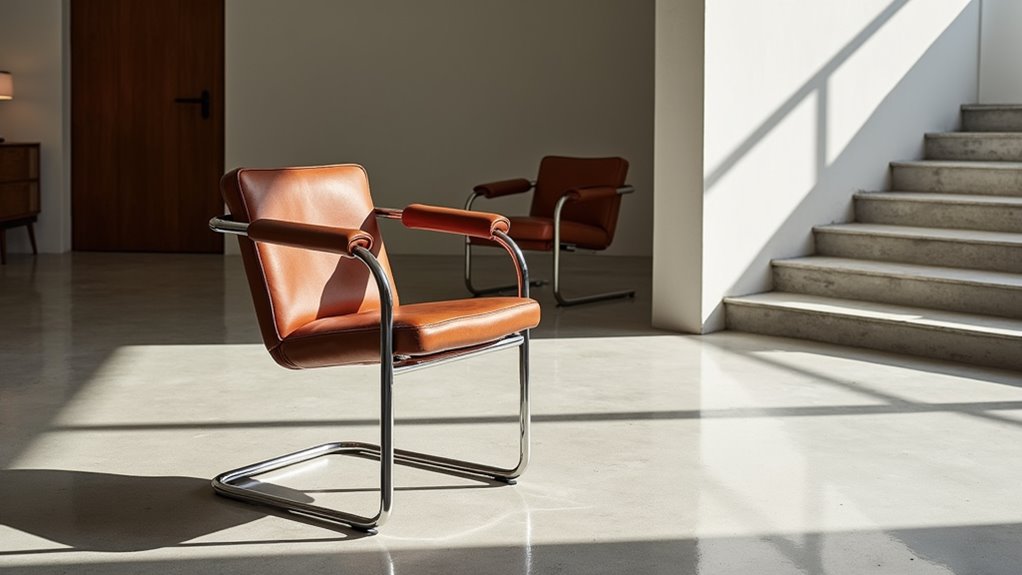
A collaborative spirit characterized the groundbreaking partnership among Le Corbusier, Pierre Jeanneret, and Charlotte Perriand, fundamentally reshaping modern furniture design from the late 1920s to the late 1930s.
This partnership dynamics harnessed each member’s strengths, with Le Corbusier introducing radical architectural concepts, Jeanneret contributing technical finesse, and Perriand infusing aesthetic innovation. Together, they initiated a design evolution that culminated in iconic pieces such as the LC1, LC2, and LC4.
Perriand’s initial dismissal by Le Corbusier transformed into a vital role, establishing a cohesive approach that balanced functionality with beauty. Their collaboration not only yielded pioneering designs but created a legacy that continues to influence contemporary furniture production, demonstrating the enduring impact of their combined vision on modernist ideals.

